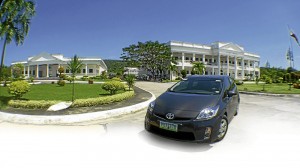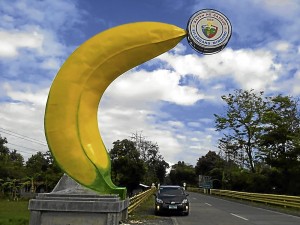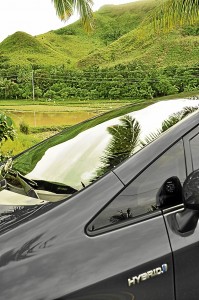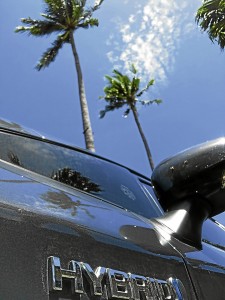The Roro less taken: Manila to Boracay, and beyond
It’s so easy to fly to any far-flung place in the Philippines nowadays, it’s getting to be a bore. Really. And when you’re someone who firmly believes in the saying “The journey, not the arrival, matters” by TS Eliot, then you’ll definitely be terrified of flying. Not because of the prospect that the aircraft might malfunction anytime and crash, but because the flight would have taken half the thrill of your trip away.
It is in this spirit of adventure that this Summer Trip article has been written. Flying does present an unparalleled world of conveniences, especially for the hurried traveler. But going on a road trip, and riding the Strong Republic Nautical Highway (SRNH), has its inherent charms. And when you’re a group of five or more with lots of luggage, hitting the roads instead of taking to the skies could turn out to be a lot more fun.
Now, thanks to technology that has brought us the wonderful global positioning system (GPS), you don’t have to play guessing games and pull over every so often to ask for directions. Any smartphone worth its salt has a built-in GPS or navigation guide. Just key in your destination (say, Caticlan, Kalibo or Boracay) and let your gadget lead the way.
For those who still prefer holding on to their old, worn-out maps, the key points to encircle are: (if you’re coming from Manila) the Batangas City and the Roxas, Oriental Mindoro Ports. If you’re coming back to Manila, then put an X-mark on the Caticlan, Aklan and Calapan, Oriental Mindoro ports. These four piers are crucial to enable you to cross from the Luzon mainland to Panay Island, and vice versa.
Then, make sure the vehicle you will bring is in tip-top shape and comfortable enough to fit you and your luggage. You would never want yourselves to suffer from your car breaking down while in transit on a Roll-on Roll-off (Roro) vessel, hundreds of kilometers from the nearest car shop. Don’t forget to bring copies of your vehicle’s OR (official receipt) and CR (certificate of registration). The Coast Guard at every port will be looking for them. No papers, no Roro ride.
Set aside cash to pay for terminal fees, arrastre (which roughly pertains to the service done to load and unload your vehicle and cargo from the ship to the dock, and vice versa), and the Roro fees for the vehicle and the passengers (the driver boards for free). The good news is that the local port authorities and shipping lines have streamlined their processes for verifying of papers and collecting fees. There was a time not more than a decade ago that arranging for a vehicle to ride the Roro was like putting a big jigsaw puzzle together: getting tickets for passengers was in one building, paying for the vehicle was in another. Then, you’d have to walk half a kilometer away to get your clearance from the Coast Guard, and then another winding walk down dark hallways to pay for the arrastre. By the time all your papers and tickets were in order, the Roro would have darn nearly sailed off.
Today, paying for terminal-related fees and putting the vehicle’s papers in order are conveniently accomplished in one drive-through window (in the Batangas City Pier). All you have to do is present your OR and CR at the window as you drive by the booth and pay. Your passengers need not even go down from the vehicle. The Roro ticketing officers will approach you as you line up your vehicle for boarding, where you would pay for the vehicle and the passengers. The process has basically been simplified in the other three ports, as well.
On average, a Roro vessel sets off for the three-hour crossing from Batangas Port to the Calapan Pier every two hours. From Calapan, vehicles bound for Panay Island have to make the 125 km dash from Calapan to Roxas Pier in southern Oriental Mindoro to catch the Roro going to Caticlan Pier in Aklan. The Roro here makes less frequent trips, as one crossing may take up to five hours. So, on average, only two or three Roro trips are made a day. Check the website of one of the more reliable Roro services, Montenegro Lines (montenegrolines.com.ph) to check for the schedules, as well as their fees. Don’t go driving too fast in Mindoro, though. The highway is quite narrow and the houses stand close to the road. Enjoy the scenery, which may be just as refreshing as any country drive in the Philippines.
Since the Roro trip from Roxas to Caticlan takes considerably longer, the fees are higher.
The Roro vessels, both on the Mindoro and Panay stretches, are generally well-maintained. Some basic amenities, though, like the restrooms and onboard convenience store, may need some improvement. But if you can hold things in for up to five hours, then good for you, mate.
Your arrival in Caticlan Pier truly opens up a big new island for you and your group to explore on the road. World-famous Boracay Island is just a 15-minute pumpboat away, and there are plenty of parking lots being offered around the Caticlan Pier (at a going rate of P150 per overnight) so you can leave your car in relative security and safety. If it’s Ati-Atihan season, you can head on over to Kalibo, 60 km to the east to witness real “hala bira!” festivities. Iloilo City is six hours away via Kalibo and Capiz Province, or four hours away via the more scenic Caticlan-Antique route.
The trip from Manila to Kalibo is all of 440 km, but since a large part of that would be via the sea, the actual driving distance registers at only about 280 km. The total travel time, from Makati to Kalibo, runs to 15 hours, including the time spent waiting for the Roro ships to dock and depart.
Cost experience with the Prius
On the first week of March, this writer embarked on another Roro journey with the Toyota Prius, this time with the intent of going all the way from Manila to Iloilo (the first time, last November, we made it only up to Kalibo due to time constraints). We kept our receipts to tally our cost experiences. Here are the telling numbers: Batangas-Calapan Roro passenger fare—P192; vehicle fee—P1,536; terminal fee of P129 for the vehicle (called RoroTfee), passenger terminal fee of P30. At the Roxas Port: A toll fee of P30; Roro terminal fee of P129; Roxas-Caticlan passenger fare of P391 and vehicle fee of P3,680. Thus, one way, from Batangas to Caticlan, the Roro expenses run up to P6,087.
Going back to Manila from Panay, here’s the bill: At the Caticlan Pier: Weigh bridge fee of P80 for a class 1 vehicle; Terminal fee of P20; passenger fare of P391; Roro vehicle fee of P3,680 (Caticlan to Roxas). At Roxas Pier, toll fee of P30. At Calapan Pier, Roro vehicle fee of P1,536; passenger fee of P192; Roro terminal fee ticket at P129; terminal fee of P20, for a total return expense of P6,078.
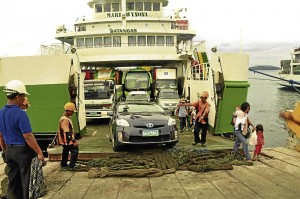
A VETERAN roro tripper knows extra caution is required when loading low ground clearance sedans into the vessels. PHOTOS BY TESSA R. SALAZAR
Hypothetically, if there were five of us in the vehicle, there would be an additional expense of P1152 and P2346, both ways, for the Batangas-Calapan and Roxas-Caticlan stretches, respectively. Adding that to the total of P12,165 our two-passenger team incurred, a five-person group would incur a grand total expense of P15,663 for Roro expenses. Then, add to that fuel expenses. A Manila-Kalibo trip is 280 km long road-wise. So, for an average fuel mileage of 10 km per liter and a prevailing per liter rate of P55 for leaded gasoline and P47 for diesel, the vehicle would consume 28 liters, one way (56 liters in total). That would cost P2,632 (diesel) to P3,080 (gasoline). If you add Iloilo to the itinerary (which is 150 km from Kalibo), that’s an additional 30 liters of fuel, back and forth, for a fuel expense range of P1410 to P1650. So, for a five-person convoy going from Manila to Kalibo, and back, on a diesel-powered vehicle, the grand total expense (Roro and fuel), would be P18,295 for diesel and P18,743 for gasoline. And when you add Iloilo, that would run up to P19,705 (diesel) and P20,393 (gasoline). In effect, each person would have to shell out P3,659 (on a diesel-powered car, to Kalibo only) or P3,749 (gasoline), and P3,941 (diesel, to Iloilo), or P4,079 (gasoline, to Iloilo).
Most likely, the plane fares would be much lower on a cost per person basis. And you would only have to endure two hours of waiting in mid-air both ways, as opposed to a 30-hour tour on cars, highways, rough roads, rough seas (yes, summer’s strong breezes can whip up some nauseating waves) and the unpredictable moods of public servants. But can you stop a plane in mid-flight, step out, smell the flowers, take wacky shots, or discover a gem of a restaurant? We didn’t think so, too.
On an incredibly thrifty Prius (we got a “sloppy” mileage of 18 km per liter; sloppy because we sometimes turned the engine and aircon on inside the humid vehicle compartment of the Roro vessels), we were able to drive through five provinces (Batangas, Oriental Mindoro, Aklan, Capiz and Iloilo) and snapped hundreds of pictures. A priceless catch TS Eliot would have loved to see.
Do you have an interesting Roro story? E-mail the author at tsalazar@inquirer.com.ph.

